In Spain, there are often discrepancies between the information in the official urban development plan (e.g. Plan General de Ordenación Urbana, or PGOU for short) and the entries in the cadastre (Catastro). This discrepancy can lead to confusion, especially when owners or potential buyers want to know whether and how a property can be built on or how much tax is payable. Below you will find out why these discrepancies occur, what role other registers play and what can be done to clear up any confusion.
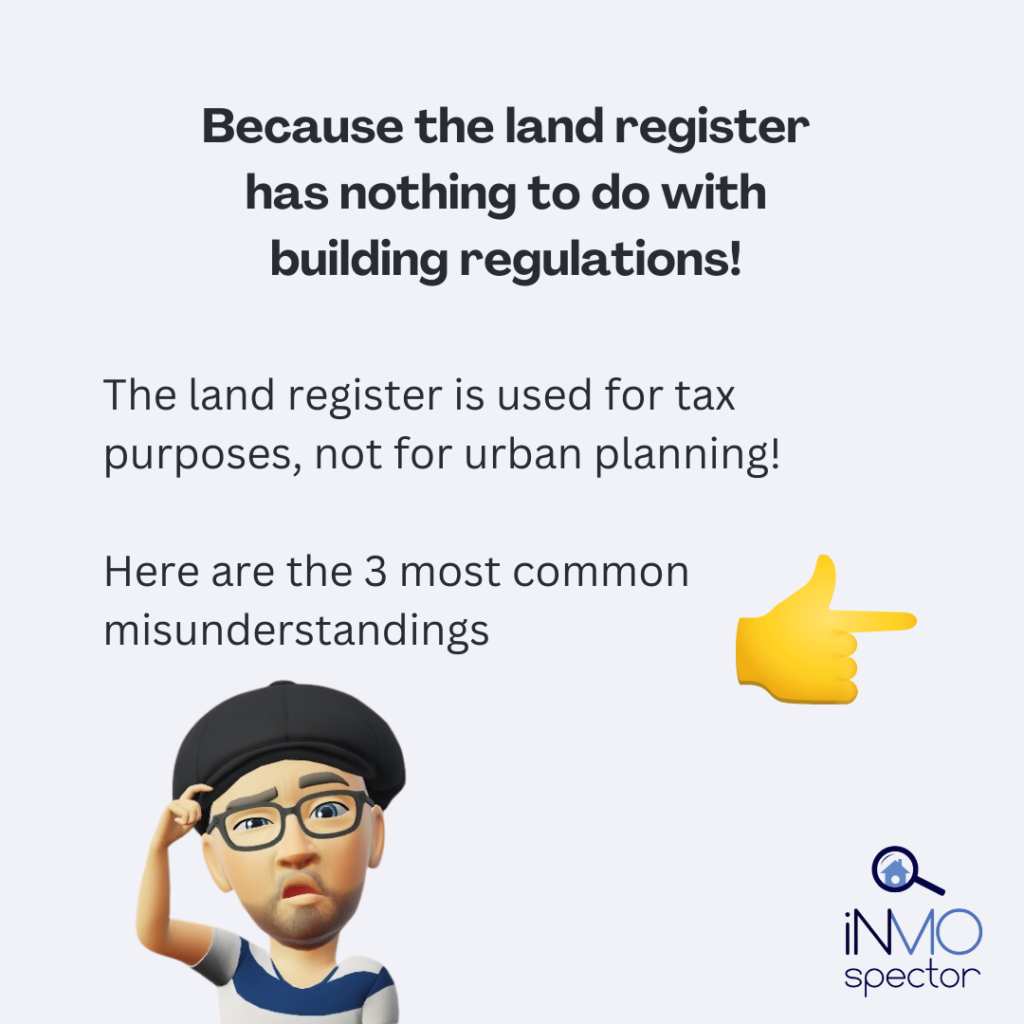
1. Different Origin of the Data
1.1 Urban development report (PGOU & Co.)
- Legal character: The General Urban Development Plan (PGOU) or the respective Normas Urbanísticas Municipales represent the legally binding basis for the classification of properties in Spain.
- Classification: This determines whether a plot of land is urban (urbano), developable (urbanisable) or rural (rústico).
- Binding nature: Only this categorisation ultimately determines whether development is permitted and what type of development is planned or permitted.
1.2 Cadastre (Catastro)
- Administrative and tax register: The cadastre is primarily used for tax purposes – in particular for the collection of the Impuesto sobre Bienes Inmuebles (IBI, property tax).
- Classification criteria: For the cadastre, it plays a role whether a property has been built on, whether it is located in an area with urban infrastructure or whether there are other characteristics that indicate that it can be used in an “urban-like” manner.
- Not always up to date: Because the cadastre is based less on legal categorisation than on actual or tax-relevant use, it does not always reflect the latest state of urban planning.
Conclusion: Although the land register can provide an initial orientation, it is not decisive for the question of whether you are authorised to build. The respective development plans (PGOU etc.) are decisive for this.
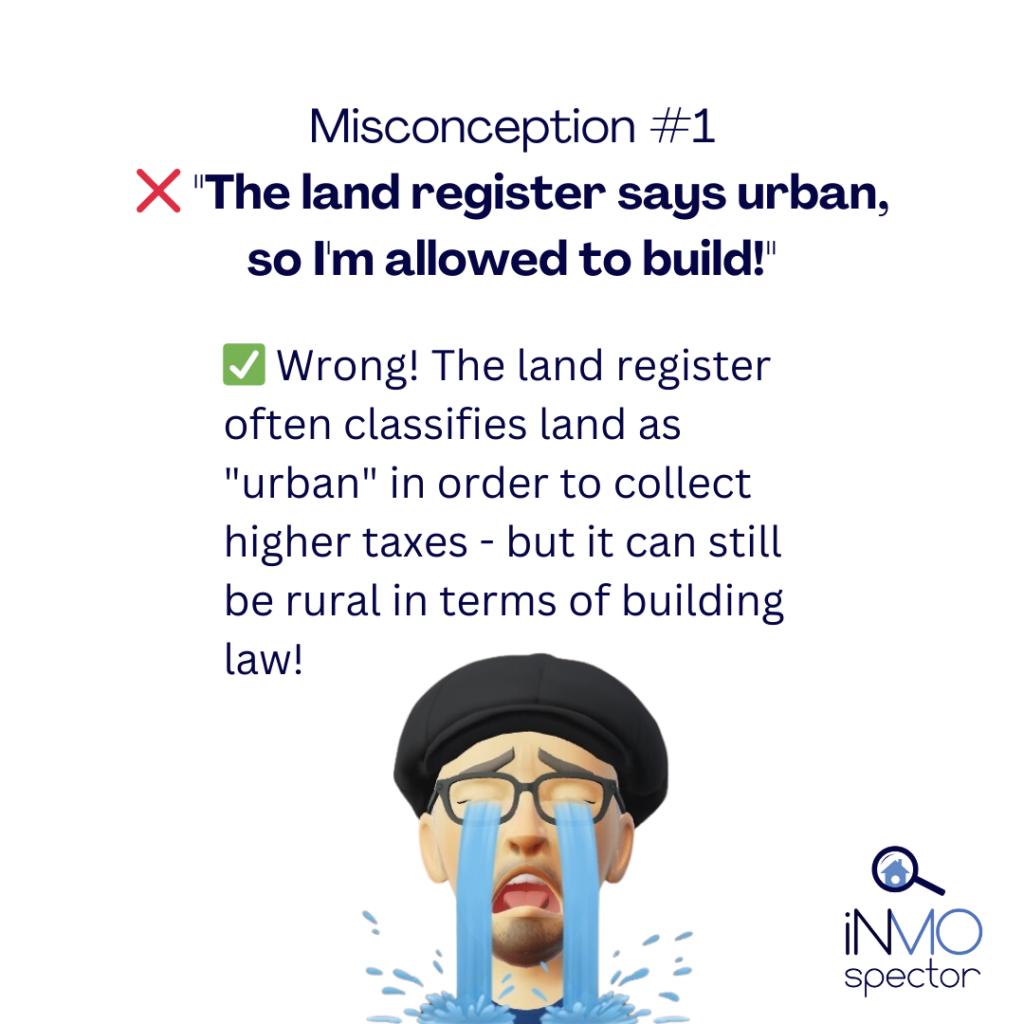
2. Reasons for discrepancies between PGOU and land register
2.1 Differing classification criteria
- A property can be listed in the cadastre as “urbano” (urban) because, for example, it is already built on or is located in an area that could, in principle, be connected to urban infrastructure.
- In the urban development plan, however, the same property may still be classified as “rústico” or “suelo no urbanisable” if the sector is not developed or development has not yet been planned.
- Conversely, the land register may still show “rustico” even though the new development plan envisages the area being developed in the near future.
2.2 Outdated data and administrative errors
- Non-updating: When a new PGOU comes into force or a rezoning takes place, it often takes time for these changes to be transferred to the cadastre.
- Incorrect transfer: Sometimes historical data is transferred that is now outdated (e.g. land was previously classified as urban and was reclassified as rural, but the cadastre has not updated this).
2.3 “Unconsolidated urban area”
- In many municipalities, there are areas that are planned as urban in the long term, but whose development (roads, sewage system, etc.) has not yet taken place.
- The cadastre often already lists such areas as “urbano”, although the PGOU (still) classifies them as “suelo urbanizable no sectorizado” or “no consolidado”. In an official urban planning report, they may then continue to appear as rural or as undeveloped, buildable land.
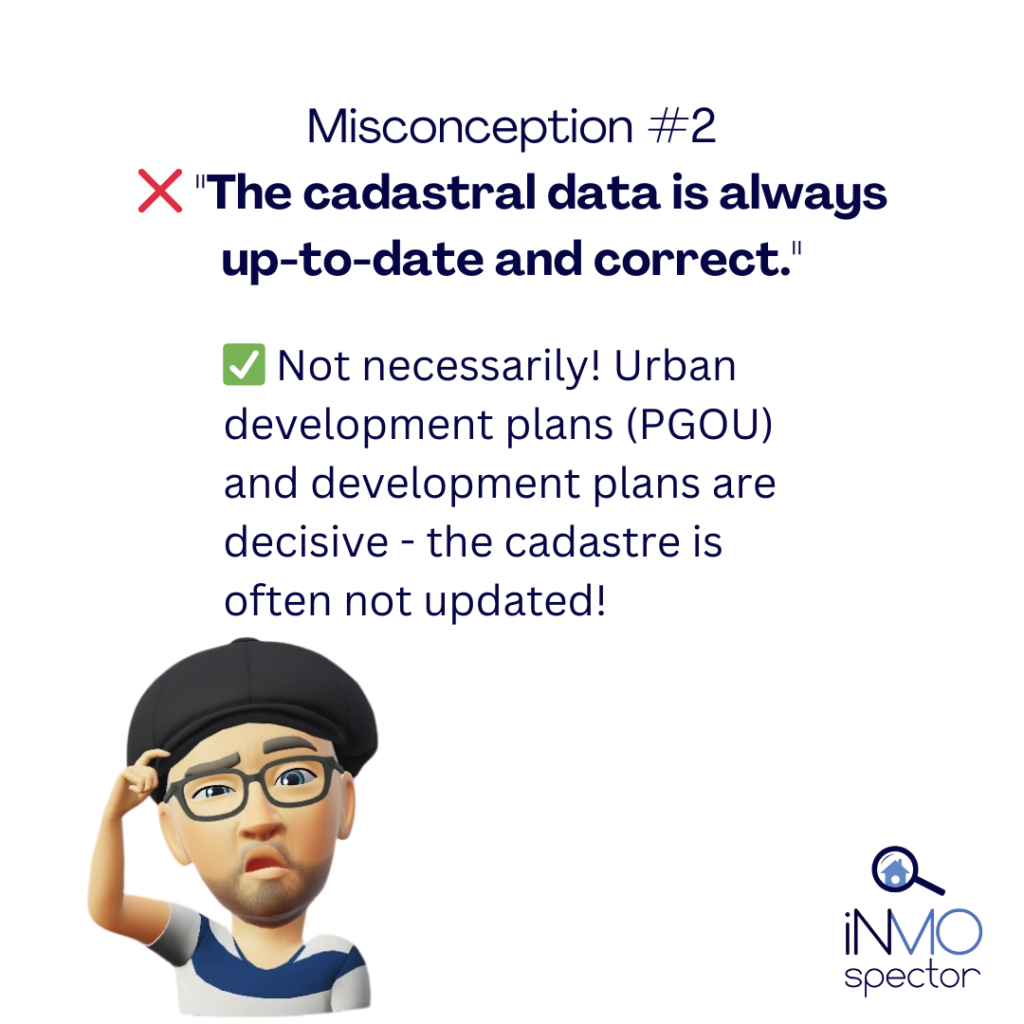
3. Other important registers: Registro de la Propiedad
In Spain, the land register (Registro de la Propiedad) exists alongside the cadastre. This is mainly used for ownership (Who is the owner of the property?) Rights and encumbrances (mortgages, easements, etc.) are recorded in a legally secure manner.
Unlike the cadaster, which is tax-oriented, the land register provides official proof of ownership. Here too, discrepancies can sometimes arise (e.g. if the parcel boundaries in the land register do not match the details entered in the land register).
Note: The Registro de la Propiedad primarily clarifies questions of ownership (and the associated rights), while the cadastre fulfils tax purposes. Urban planning (e.g. the PGOU) ultimately decides on building utilisation options.
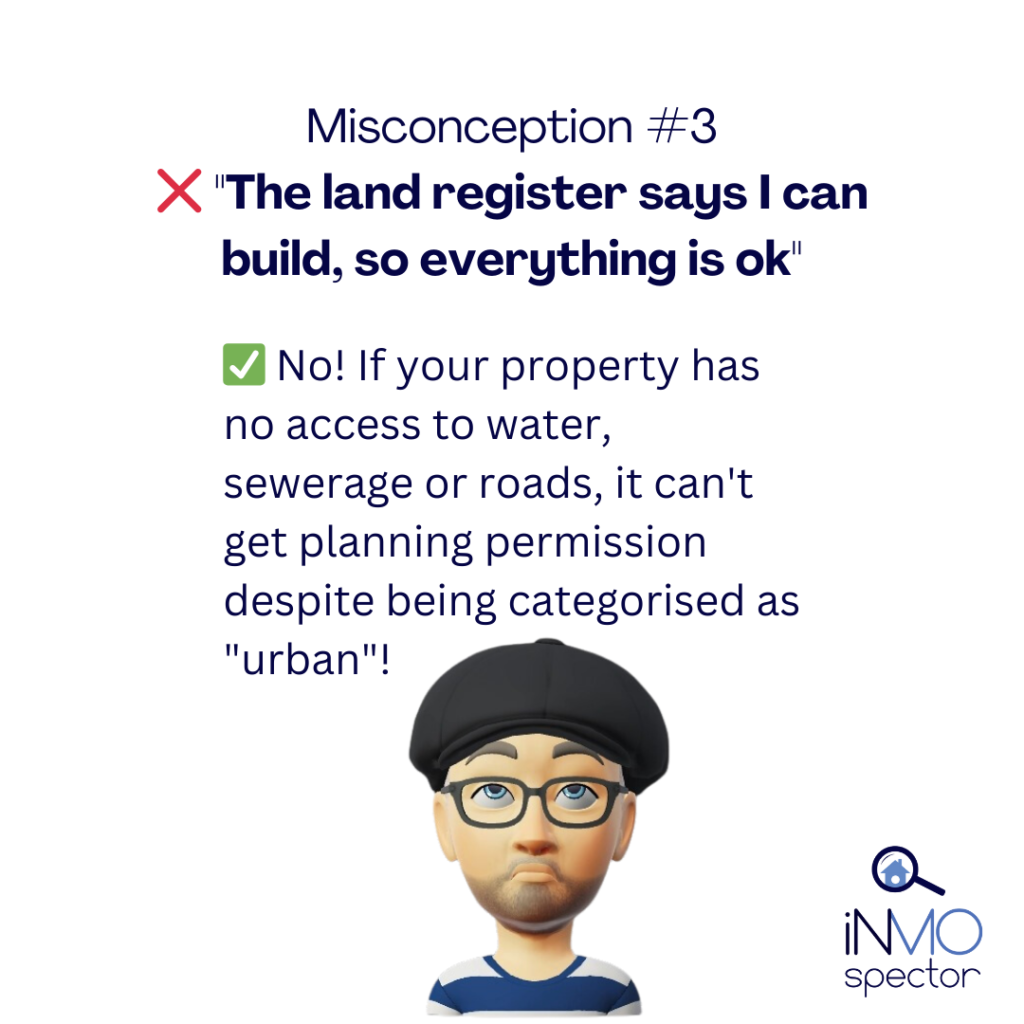
4. What to do if there are uncertainties?
4.1 Obtain information from the authorities
Enquire with the city administration:
- Obtain formal confirmation of the categorisation of your property. In many municipalities, this is a so-called Certificado Urbanístico or similar urban planning certificate, which provides reliable information about the applicable planning and development rights.
- Insight into the PGOU and the “Normas Urbanísticas Municipales”:
These documents are the authoritative legal basis. Check whether there are any current changes or ongoing rezoning procedures.
4.2 Specialist advice from an architect or urban planner
In the case of larger projects or uncertainties, it is advisable to consult an urban planning expert or architect in order to:
- Recognise possible development potential (e.g. whether a rezoning is pending)
- Identify any errors and develop a strategy to correct them
- Provide evidence or plans that may be required to update the land register
4.3 Correction of the cadastre (if necessary)
- If it is clear that the cadastral data is obviously incorrect, a rectification (rectificación catastral) can be requested.
- This often requires the submission of official documents or expert opinions that show the correct categorisation or the correct property boundaries.
- In some cases, the municipality also initiates a revisión catastral if a large-scale update is due.
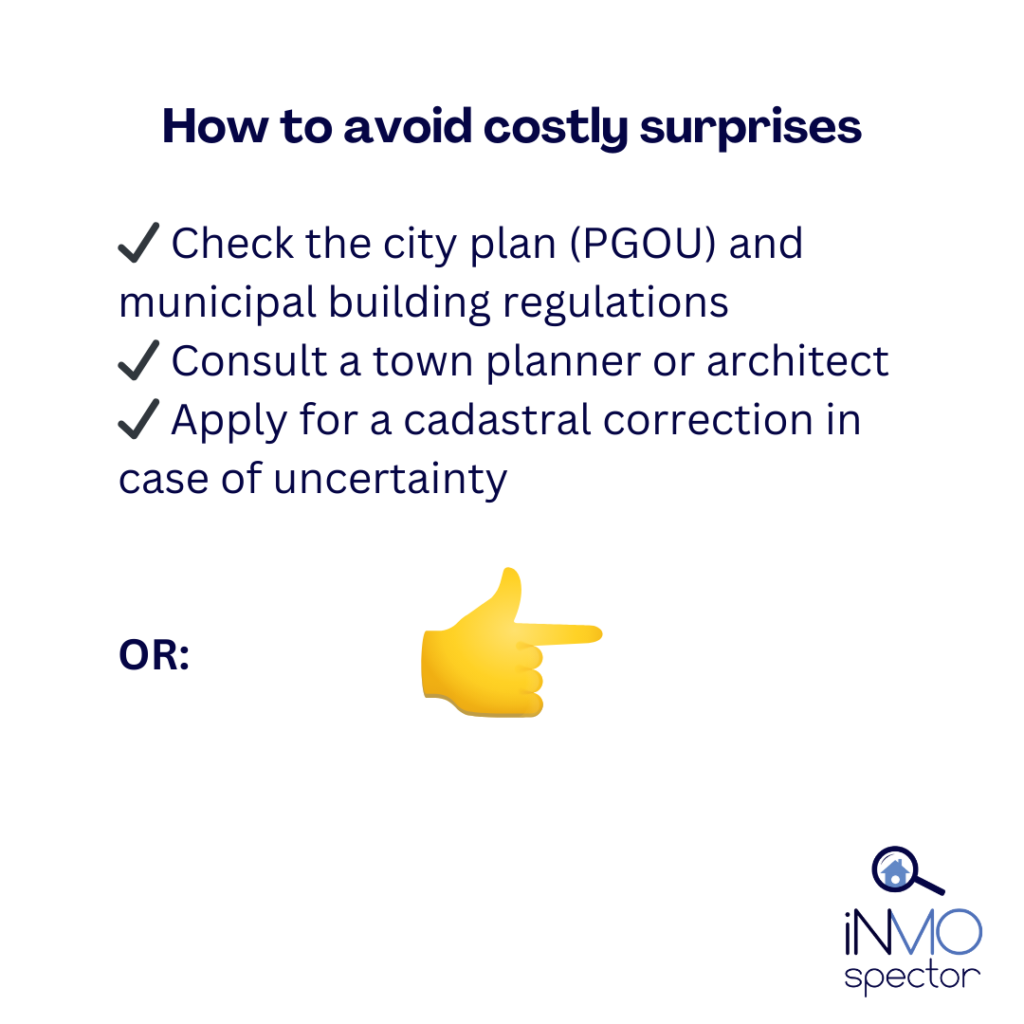
5. Why is the correct categorisation important?
- Building law: If you want to build on a supposedly urban plot, but subsequently realise that the plot is actually still classified as rural, you can run into considerable problems (e.g. no building permit).
- Taxes: The categorisation in the land register has a considerable impact on the amount of IBI (property tax). If you are assessed as “urbano”, for example, this may result in higher tax amounts.
- Valuation: Especially when buying or selling, the urban classification plays a decisive role in the price, as does the cadastral value (valor catastral).
Summary
1. Town Plan vs. Cadastre
- The city plan (PGOU, Normas Urbanísticas Municipales) is legally binding for the use and development of land.
- The cadastre is primarily a tax register and may have outdated or deviating classifications
2. Frequent causes of differences
- Differing classification criteria
- Outdated or incorrect data
- “Unconsolidated urban area”: cadastral classification and actual development diverge.
3. How to proceed
- Ask the city council for official information (e.g. Certificado Urbanístico).
- Consult experts (architect/urban planner) to clarify legal and technical questions.
- Apply for a cadastral correction if there are clearly incorrect entries.
4. Other registers
- The Registro de la Propiedad (Land Registry) is responsible for property and encumbrances – the cadastre for tax issues, and the PGOU for building law issues.
Does this sound too complicated?
Having difficulties with the technical language?
The town-council or municipal architect are not responding?
Let us check the urban planning situation of the property you are interested in for you! Click here to request an urbanistic property report now!

Note: This document does not constitute legally binding legal advice, but is intended for general information. For specific questions or projects, it is advisable to contact a specialised lawyer, architect or town planner and to consult the relevant authorities.

